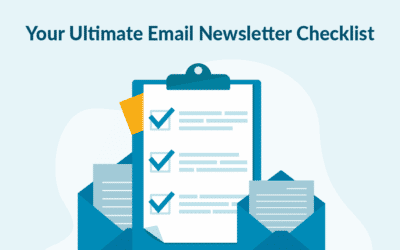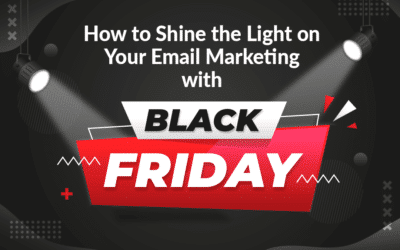Gamification and email marketing
Personalisation, segmentation, increasing relevance of content, and subject line optimisation are all examples of perfectly valid (and indeed correct) strategies to engage with your audience when using email marketing.
That said, there are alternatives, very engaging and relevant alternatives, that could really help you if you are in need of giving your opening and conversion rates a bit of a boost.
In an earlier article we spent some time exploring the concept of gamification, setting the parameters around what does and does not genuinely constitute gamification.
The application of game-design elements, principles, and mechanics in non-game environments to inspire and improve customer and user engagement and loyalty, means that gamification is ideally placed for use in email marketing as part of your overall audience engagement, retention, and development methodology.
How should I use gamification in email marketing?
The how, where and when of using gamification with your email marketing is not an exact science, it depends on what you are trying to achieve and with which audience. However, to be effective it should adhere to the three key principles of;
- Giving users the motivation – a chance to win, receive rewards or gain recognition.
- Giving users the ability to carry out a task, making the user feel better able to complete the task.
- Give the user a trigger, cue or reminder to complete the action.
With gamification you are tapping into your audience’s core drives, around such things as reward, development, accomplishment, creativity and ownership.
So, whatever strategy you develop, and however you choose to implement it, your gamification needs to both excite, and offer the tools answer these drives.
Depending upon your budget and the complexity of both your audience and campaign goals, there are a number of ways in which to introduce gamification into your email marketing.
But keep in mind that people will engage with your gamification only if the end reward is worth it. So, if the prize on offer is small and/or symbolic, the game-mechanic should reflect this by being very simple or easy.

The Really Basic Basics
Gamification does not have to be complex. In many ways the very best gamification could be regarded as almost invisible. Modest audience-building gamification can be used to tease out useful information from your audience and can include a challenge your family/friends mechanic, designed to encourage sharing and drive further email subscriptions.
Take for instance discounts and offer emails. People are familiar with discounts and offers, especially in email subject lines, so much so that they risk becoming dangerously irrelevant.
But something as simple as turning a “discount” into a “prize” can render your email instantly more engaging, and against the white noise of offer and discount mails clamouring for user attention in inboxes, they can be much more likely to be opened.
And yes, this is gamification, because with a prize you are appealing to the “reward” and “winning” core drives of an individual. It makes the offer become something that not everyone will necessarily win (even if in reality they do). It marks the participant out as being a winner.
So, what matters here is the messaging, and to what needs and desires you are appealing in your target audience.
Other simple gamification includes such basic things as quizzes, surveys, and aptitude tests.
Make these engaging and relevant to your target audience, and they can motivate your readers to devour the entirety of the content that mail, especially if, for instance, you bury clues to the test answers within the mail, or indeed on your website if that is to where you would like to drive your audience.
But be wary of making it too cumbersome or difficult to find the clues as this will turn your audience against you very quickly.
Instead you should make sure that your test reflects the relevance of the specific offer you are making within your email, and the subsequent reward for completing the test.
Gamification is not games, right?
If you are using a more complex game mechanic to attract and build an audience, you could include a shareable link in your email to a game hosted on a separate branded campaign-specific landing page on your website. However, whilst gamification is built around motivation, competition and reward, merely creating a specific game property, whilst fun, is not true gamification.
A branded game can be a valid tool for engagement, but for it to be considered gamification it needs to sit within a broader whole, and not merely be an end in and of itself.
As an example, event-focused or seasonal campaigns, can benefit from good gamification. Depending upon your area of business, with things such as advent calendars, Easter-egg hunts, and summer-holiday focused gamification paying particular dividends.
Again, however, this is not necessarily new territory, and you will need to give some careful thought as to how you add your own twist to the theme. Whatever you do, your gamification must be true to your brand values and the spirit of the seasonal offering or event around which you are building the campaign. It should also be rigorously relevant in the eyes of your audience. It is better to avoid doing something half-heartedly, than to risk damaging your brand reputation with something that your audience will see as “cheap and nasty”.

Gamification and direct sales
Remember, your purpose with gamification should be to engage and inspire your audience, not necessarily drive a specific purchasing process per se.
The halo effect of well applied gamification in email marketing will be an increase in sales, but the purpose of your email marketing gamification itself is to engage, entertain, and inspire your audience.
So… give your audience a reason to engage
Never forget that your audience is savvy, and increasingly sophisticated. Nobody wants to play a boring game, at least not more than once, and nobody is going to share a gamification experience that is brazenly exclusively sales focused. You would be much better off spending your marketing dollars elsewhere if you are merely going to press every single member of your audience’s “cynicism-buttons” on this front.
A good example of how engagement using gamification in email marketing can be used to attract new subscribers, and retain them, comes from the UK, where the pizza chain Papa John’s garnered awards for their “Score Twice Half Price” English Premier League email campaign.
The very simple games mechanic involved teasing English Premier League football fans with the chance of getting a 50% discount off pizzas if their chosen team scored at least two goals in a match.
The campaign was successful not only in attracting new subscribers, but also in the retention and activation of those new subscribers with the brand, given that the campaign was both season-long and trackable.
This gave Papa John’s 10 months in which to provide relevant ongoing communications with new and existing subscribers whilst in turn providing those subscribers with the encouragement, reason and means to independently continue their engagement with both the campaign itself and the brand long after sign-up.
Gamification – anticipation, engagement, and reward…
But how about more complex gamification? You’ve tried the simple stuff, it’s working, but what else can we do with gamification?
In this article we are staying away from looking at campaigns that push users towards specially created game real estate that is designed to engage purely for the sake of it.
There absolutely is nothing wrong with this material in and of itself. But as we alluded to earlier, unless the games itself sits within a broader campaign, its lasting effect is exclusively focused towards the experience itself and not necessarily how this reflects upon your brand and how your audience engage with it on an ongoing basis.
Where gamification works best is when it seamlessly engages the audience, integrating the gamification experience into the overall brand experience enjoyed by the audience.
For instance, as a business, if you have an important date coming up, gamification is a fantastic tool to create a buzz of anticipation and excitement around the event that begins well before and lasts throughout the event experience as a whole.
An excellent example of this comes from a campaign run by Litmus ahead of their 2016 Litmus Live conference.
Many of us will be familiar with the classic children’s novel Charlie and the Chocolate Factory, where the surreal Willy Wonka sends out a handful of special tickets to visit his factory to a group of almost insanely excitable children. These came in the form of special “Golden Tickets”, and Litmus very cleverly used this classic formula to build excitement around their event.

Litmus was starting with an already fairly-well engaged audience, but also needed to spread the word beyond this well-established group.
As Erin King from Litmus says:
“We wanted to generate excitement and get our audience to participate in spreading the word about our events. We also wanted to prolong engagement with our emails over an extended amount of time. In other words, we wanted to go viral, and make it last.”
To do so, in their email campaign they set the audience challenges that rewarded the winners with free tickets, whilst encouraging them share information about the event on social media.
Erin Litmus again:
“For our tickets on sale email, we added a new twist to the Easter egg concept—five timed challenges hidden in the email’s code. That approach allowed more people to play and win tickets to Litmus Live.”
The audience was therefore set the task of finding hidden elements such as copy or images in the Litmus emails. But the genius of the campaign came with asking them to then tweet screenshots of their answers, using their specific event tag, as part of the process of potentially winning a “Golden Ticket”. By default, then, the Litmus audience was adding to the buzz by spreading word around both the event and the campaign across social media platforms.
I want to be part of this…
And you can be.
Gamification is a relevant, engaging, and lasting way to get your message out into your audience. Used well it can do something as fundamental as build a subscriber list, create a buzz around a new product, drive traffic to your website, or build brand awareness.
It can be remarkably simple, or it can be developed into something more complex, so long as it is always relevant.
Just remember when you use gamification to always put yourself in the shoes of your audience. What gamification experience would YOU find fun, and does it make sense with your brand?
Get this balance right and the playground is yours!
Try MarketingPlatform for free for 14 days
The trial period is free, completely non-binding and expires after 14 days if you do not wish to continue.
When you sign up, you will also receive our educational flow via a series of emails along with our newsletter with regular updates.





